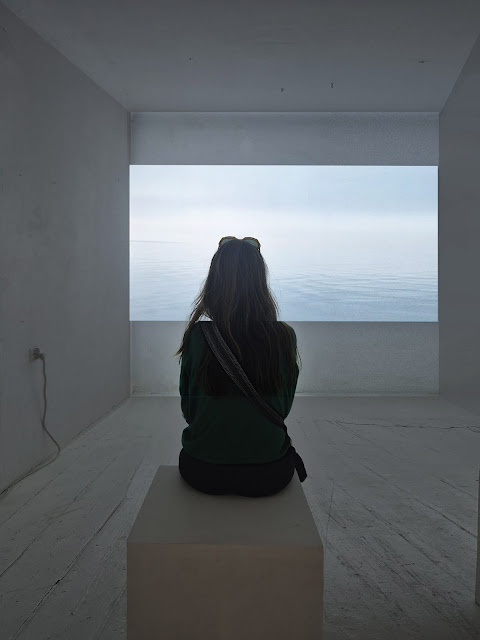potrafią śpiewać nocą / they can sing at night
There may be no more places in the world whose landscape has not been changed by humans. However, there are still places where we experience time differently. One of them is Spitsbergen, located between Norway and the North Pole. The distant, frosty island allows us to drift in time, between the preserved remains of ancient fauna and flora and the symptoms of a future catastrophe. No one is born or dies on Spitsbergen – this is prevented by the difficult access to medical infrastructure and the permafrost, which stops the decomposition of the bodies of the dead. The logic of efficiency and productivity does not work here either. The landscape seems to admonish us – we are only a moment in the perspective of geological processes. On the island, deep time wins over time measured by the hands of watches. The omnipresent ice stops the past. Now, as it melts rapidly, we see it more and more clearly. Traces of life from other eras emerge from under the ice sheet. Here you can find intact skeletons of animals from the Paleolithic era or fossilized plant forms from millions of years ago. The past and the future intertwine in a mysterious way. The permanence is overwhelming – perennial trees grow so slowly that they grow to only a few centimeters – and at the same time, it is here that the change in climate caused by human activity is most visible. In the summer of 2024, Beata Długosz and Maria Wasilewska went on an expedition to Spitsbergen, to the Polish Polar Station "Petuniabukta". Using tools on the border between art and autoethnography, the artists tell about the melting of glaciers in their works. Above all, however, they try to convey the personal feelings accompanying the experience of communion with something larger than oneself – something that, in aesthetics, is defined by the category of the sublime. They confront us with processes that escape the human experience of time, the imaginable scale of human lifespan, and therefore are difficult to encompass with mind and language. Attempts to describe such experiences, in order to convey emotions, and not just numerical data, must also reach for a hidden, strange language. As in the book-conversation "The Beginning of the End? Conversations about Ice and Climate Change", in which journalist Julita Mańczak and glaciologist Jakub Małecki write about glaciers that they can sing at night. Their "singing" is what can bring us closer to the processes of their melting hundreds of kilometers away. The vibrations of the layer of snow covering the glaciers are signals for scientists. Changes in the glacier's "melody" indicate the formation of cracks in the ice and can warn of its disintegration. The installation filling the auditory space of the exhibition refers to the "singing" of glaciers, accompanying their slow transformation from solidity to liquid. The sound composition created by Gosia Wrzosek, through moments of echo and silence, intensifies the impression of loneliness. Glaciers disappear without witnesses. During the opening of the exhibition, the artist will create an opportunity to accompany this silent departure. To contemplate transformation and slow farewell. The performance, using the melodies of songs that were traditionally supposed to lead through the moment of dying and mourning, will introduce human witnesses to an extra-human, yet anthropogenic process.
Beata Długosz, photography,
Maria Wasilewska, installation, video,
Gosia Wrzosek, performance, audio,
ID, Katarzyna Wojdyła,
curator Joanna Glinkowska











